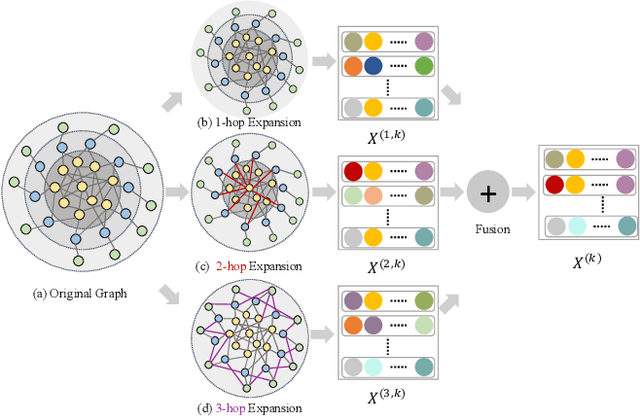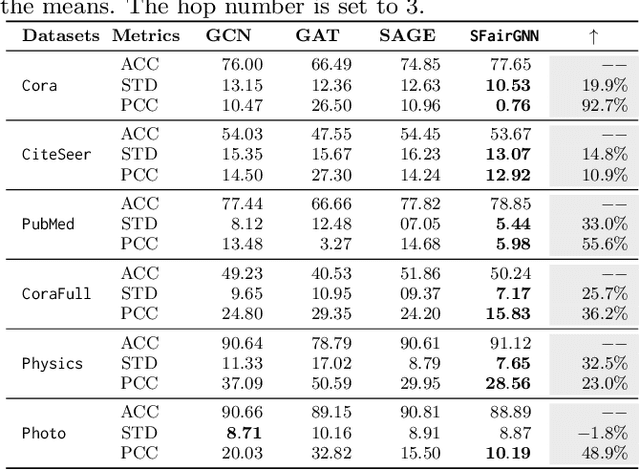Marginal Nodes Matter: Towards Structure Fairness in Graphs
Paper and Code
Oct 23, 2023



In social network, a person located at the periphery region (marginal node) is likely to be treated unfairly when compared with the persons at the center. While existing fairness works on graphs mainly focus on protecting sensitive attributes (e.g., age and gender), the fairness incurred by the graph structure should also be given attention. On the other hand, the information aggregation mechanism of graph neural networks amplifies such structure unfairness, as marginal nodes are often far away from other nodes. In this paper, we focus on novel fairness incurred by the graph structure on graph neural networks, named \emph{structure fairness}. Specifically, we first analyzed multiple graphs and observed that marginal nodes in graphs have a worse performance of downstream tasks than others in graph neural networks. Motivated by the observation, we propose \textbf{S}tructural \textbf{Fair} \textbf{G}raph \textbf{N}eural \textbf{N}etwork (SFairGNN), which combines neighborhood expansion based structure debiasing with hop-aware attentive information aggregation to achieve structure fairness. Our experiments show \SFairGNN can significantly improve structure fairness while maintaining overall performance in the downstream tasks.
 Add to Chrome
Add to Chrome Add to Firefox
Add to Firefox Add to Edge
Add to Edge